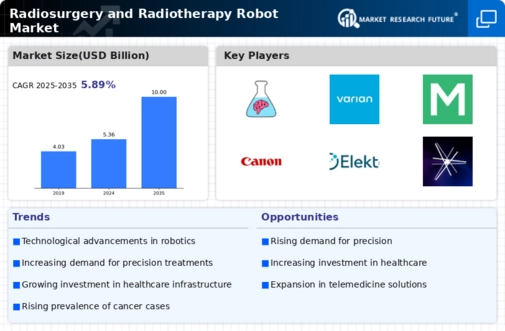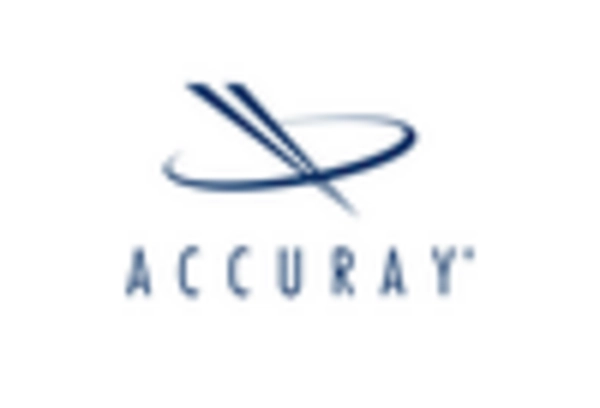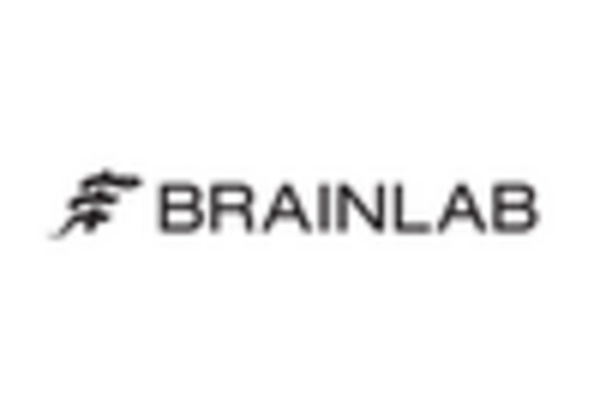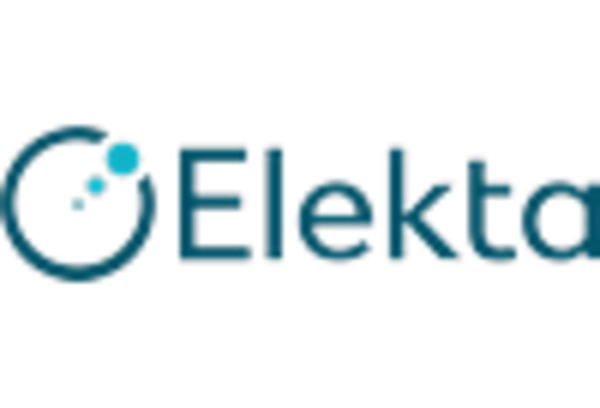Rising Incidence of Cancer
The increasing incidence of cancer worldwide is a primary driver for the Radiosurgery and Radiotherapy Robot Market. As cancer rates continue to rise, the demand for effective treatment options is escalating. According to recent statistics, cancer cases are expected to reach approximately 30 million by 2040, necessitating advanced treatment modalities. Radiosurgery and radiotherapy robots offer non-invasive treatment alternatives that are gaining traction among healthcare providers. This growing need for innovative cancer treatment solutions is likely to propel the market forward, as healthcare systems seek to adopt technologies that can improve patient care and treatment efficacy.
Government Initiatives and Funding
Government initiatives aimed at improving cancer care and treatment accessibility are significantly influencing the Radiosurgery and Radiotherapy Robot Market. Various countries are implementing policies to promote the adoption of advanced medical technologies, including robotics in radiotherapy. Increased funding for cancer research and treatment infrastructure is also evident, with several governments allocating substantial budgets to enhance healthcare facilities. This financial support is likely to encourage hospitals to invest in radiosurgery and radiotherapy robots, thereby expanding the market. The potential for collaboration between public and private sectors further enhances the prospects for growth in this industry.
Growing Awareness and Patient Demand
There is a notable increase in awareness regarding advanced cancer treatment options among patients, which is driving the Radiosurgery and Radiotherapy Robot Market. Patients are becoming more informed about the benefits of minimally invasive procedures and the effectiveness of robotic-assisted therapies. This heightened awareness is leading to greater demand for radiosurgery and radiotherapy robots, as patients seek out facilities that offer cutting-edge treatment options. Healthcare providers are responding to this demand by integrating advanced robotic systems into their treatment protocols, which is likely to further stimulate market growth as patient preferences shape the landscape of cancer care.
Expansion of Healthcare Infrastructure
The expansion of healthcare infrastructure, particularly in emerging economies, is a crucial driver for the Radiosurgery and Radiotherapy Robot Market. As countries invest in modernizing their healthcare systems, there is a growing emphasis on incorporating advanced technologies, including radiosurgery and radiotherapy robots. This trend is particularly evident in regions where access to quality cancer care has been limited. The establishment of new cancer treatment centers equipped with state-of-the-art robotic systems is expected to enhance treatment accessibility and improve patient outcomes. Consequently, this expansion is likely to contribute to the overall growth of the market, as more facilities adopt these innovative technologies.
Technological Advancements in Robotics
The Radiosurgery and Radiotherapy Robot Market is experiencing a surge in technological advancements, particularly in robotic systems designed for precision and accuracy in treatment delivery. Innovations such as real-time imaging and adaptive radiation therapy are enhancing the capabilities of these robots, allowing for more effective targeting of tumors while minimizing damage to surrounding healthy tissues. The integration of artificial intelligence and machine learning algorithms is also streamlining treatment planning and execution, potentially improving patient outcomes. As hospitals and clinics increasingly invest in these advanced technologies, the market is projected to grow significantly, with estimates suggesting a compound annual growth rate of over 10% in the coming years.


















Leave a Comment